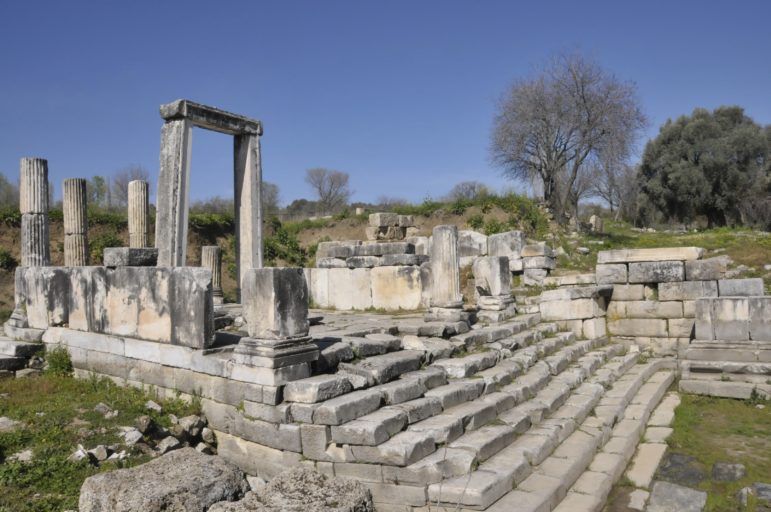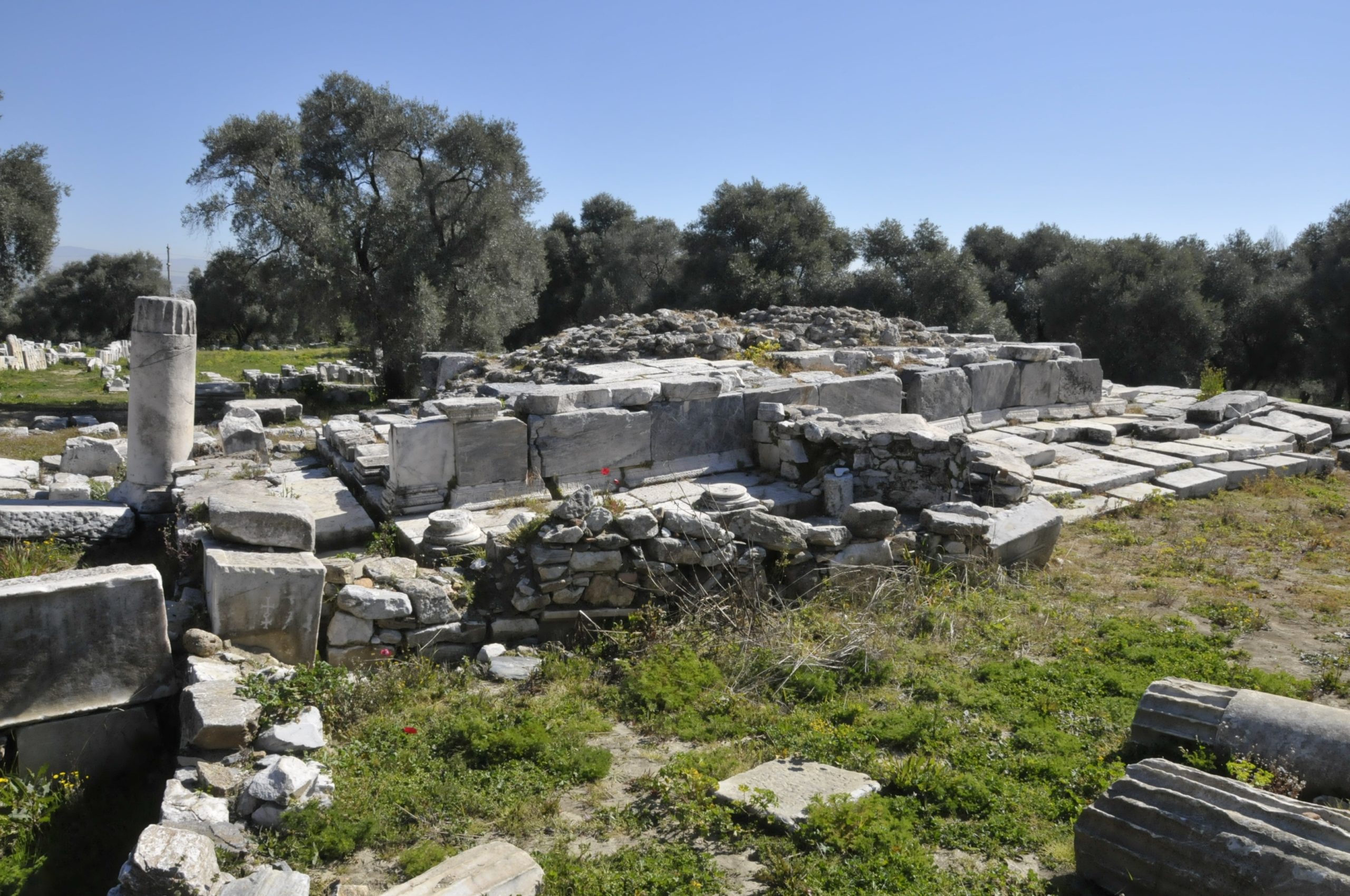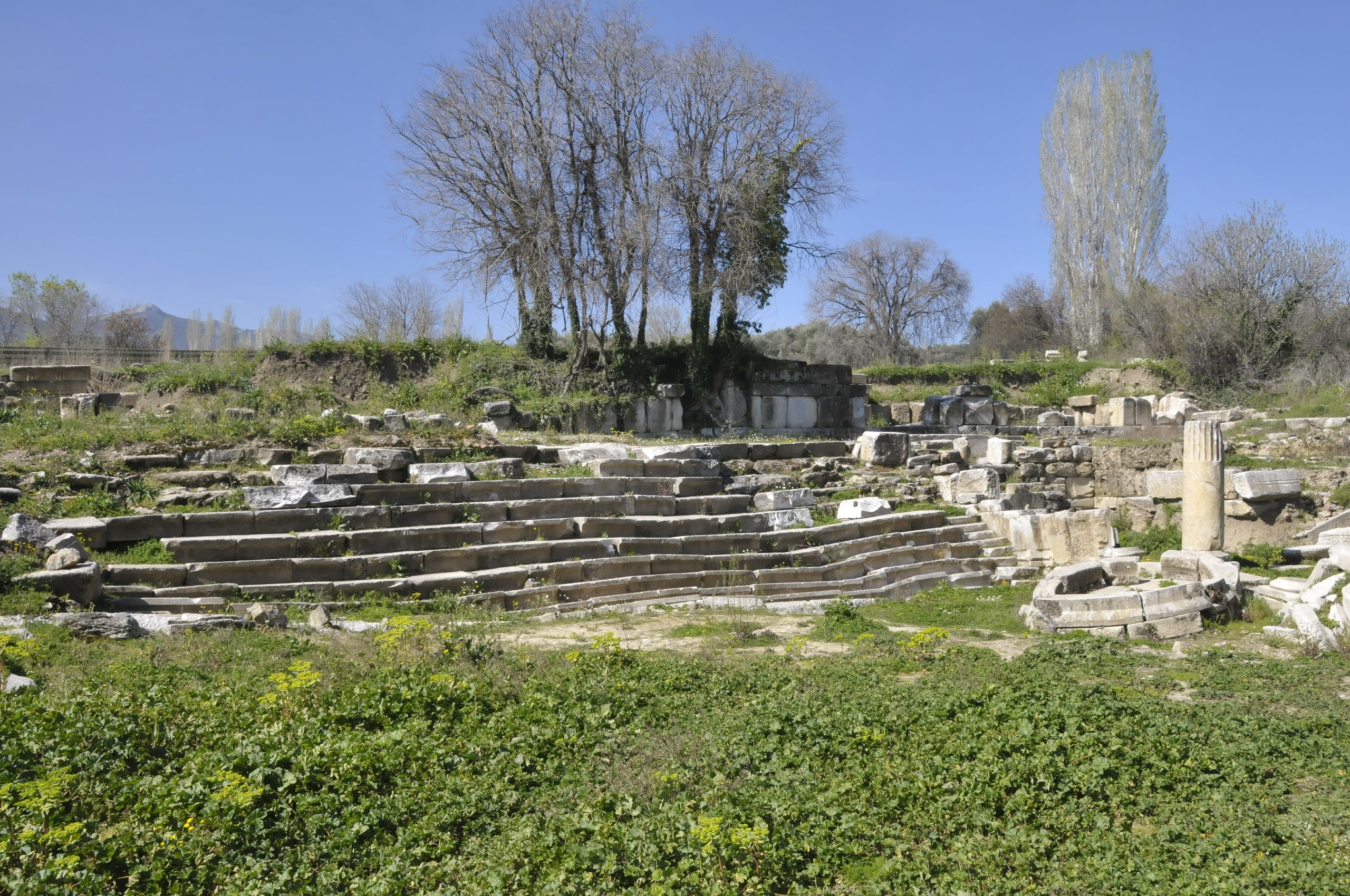TWH – Ruined ancient temples may hold clues to ancient pagan practice. In “Reconstructing the Sacred Experience at the Sanctuary of Hekate at Lagina,” architectural historian, Amanda Herring, examined that temple to understand how the ancients experienced it.

Ruins of the sanctuary to Hekate at Lagina – Image credit: CTHOE – CC BY-SA 4.0
The physicality of ancient Lagina
The Temple of Lagina is located in southwestern modern-day Turkey. In the ancient world, people called that area “Caria.” According to Herring, Caria had resisted Greek influence until the Hellenistic period (323 to 31 B.C.E). Carians built the Temple of Hecate around 125 B.C.E. The temple fused Hellenistic and Carian cultures.
Excavations have found evidence of ritual activity earlier than 125 B.C.E. The Carians had built the temple of 125 B.C.E. on top of buried religious offerings from the fourth to second centuries. After one of Rome’s enemies sacked Lagina, Rome paid to repair the temple. Carians began to see Roman as “protective.”
In Hellenistic culture, sacred and ordinary space differed spiritually and legally. Clear boundary markers separated the temenos (temple precinct) from the surrounding ordinary space. Before entering sacred space, people generally had to undergo purification.
Differences between the cults of Hecate
The cult of Hecate in the wider Hellenistic world and the cult in Lagina shared many qualities. A chthonic or underworld deity, she ruled magic and the underworld. She stood at crossroads and the transition between life and death. She carried a torch and the Keys to the Underworld.
The cult of Hecate in the wider Hellenistic world differed from that in Lagina. In the wider world, people built small shrines to Hecate at crossroads and in doorways. Her devotees made offerings of bread, fish, and cakes. They did not sacrifice animals to her.
In Lagina, however, they built a monumental temple for Hecate. Her priests sacrificed animals to her. Besides her chthonic aspect, Hecate had become a protector and civic goddess in Lagina. The Carians imprinted her image on their coins.
Practices of the cult of Hecate at Lagina
Carian culture linked religious centers with urban centers. Lagina was linked to the town of Stratonikeia, 10 km (6.2 miles) to its south. Devotees would have to travel the 10 km from Stratonikeia to Lagina. Herring argues that this would have prevented most people from going to the temple on a daily basis. Instead, only the on-site priests would perform Hecate’s daily rituals.
Herring argued that most people traveled to Lagina only during Hecate’s feast days. The Genethlia marked Hecate’s birth. It occurred on the 30th day of each month. Once a year, a larger Genethliac would occur. Hecate had a larger, multi-day, annual event called the Festival of the Key. The rites included a Procession of the Key. In that rite, the daughter of the priest of Hecate carried the key from Lagina to Stratonikeia. In that urban center, people would make sacrifices to Hecate. The priest’s daughter would then carry the key back to Lagina.
The road from Stratonikeia to Lagina led to the entrance to the temenos. Long stoas marked its boundaries. A stoa has a wall at its back, pillars at its front, and a roof overhead. The southern stoa slanted inward on a diagonal. The entrance stood at its southeastern corner. The temenos had the form of a truncated rectangle. From north to south, the temenos measured 135 meters (443 ft.). From west to east, it measured 150 meters (492 ft.).
After people passed through the gateway, they would next descend ten steps. Herring describes walking down these steps as a reinforcing “the transition from profane to sacred space.” Soon, they would see the large, ornate temple and the altar.

Entry to the Temenos, with its ten descending steps – Image credit: CTHOE – CC BY-SA 4.0
The marble temple measured 21.1 m wide (69.2 ft.) by 27.9 m (91.5 ft.) long. The Carians had raised the temple 4 m (13 ft.) above ground level. On each side of the temple, the Carians had carved friezes. Herring argues that the visual language of the friezes formed parts of the public rites of Hecate.
To the east of the temple’s entrance, stood the marble altar of Hecate. The altar measured 15 m (49 ft.) by 20 m (66 ft). A courtyard, measuring 30 m (98 ft.) by 30 m (98 ft.), separated the temple and the altar.
Once inside the temenos, attendees wanting to sit would turn to their left. Descending steps along the south stoa functioned as seats for viewing. With the temple raised 4 m above ground level, this replicated the stage and orchestra seating pattern of a theater.
Participants wanting to stand would have gone to the courtyard between the temple and the altar. Those standing in the courtyard would have likely been able to view activity at the altar and at the eastern side of the temple, which might have made this area the most significant. People in this area would have faced the eastern frieze. The eastern frieze showed the birth of Zeus. On that frieze, Hecate is running to Kronos and is carrying a rock swaddled as a baby. Kronos will swallow that rock thinking that it’s Zeus. In this frieze, Hecate has become a protector of Zeus.
The southern frieze showed an assembly of Carian and Greek deities. Most deities are standing. A few are sitting. The deities in the frieze, similar to those in the seated area of the temenos, watched the rites of Hecate being performed below them.
The western frieze showed “The Battle of the Gods and Giants.” Hecate stands in the center of the deities.
The northern frieze showed Amazons and others preparing to sign a treaty. Hecate stands over this scene giving her blessing.
All four friezes showed Hecate with a more prominent role in the Greek pantheon than she usually occupied in the Hellenistic worlds.
Modern Pagans live in a world permeated by texts. The ancient world lacked books, newspapers, magazines, and computer screen, and likely had low levels of literacy. Textual information would have been rare.
In the ancient world, visual images and architectural structures would have held considerable meaning. Herring provides a useful approach to interpret surviving ancient temples.
The Wild Hunt has previously reported on the temple of Hecate in Lagina and the ongoing excavation, restoration, and preservation of the site since 2019.
The Wild Hunt is not responsible for links to external content.
To join a conversation on this post:
Visit our The Wild Hunt subreddit! Point your favorite browser to https://www.reddit.com/r/The_Wild_Hunt_News/, then click “JOIN”. Make sure to click the bell, too, to be notified of new articles posted to our subreddit.


